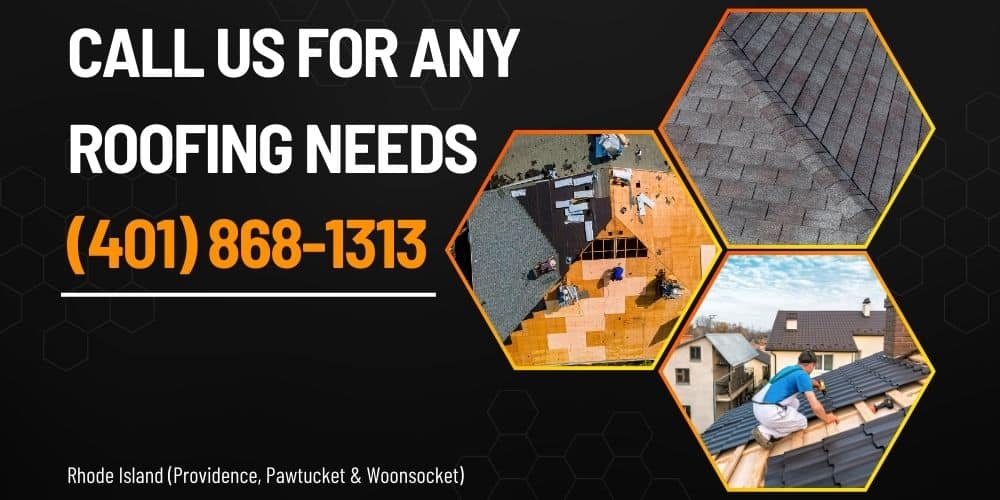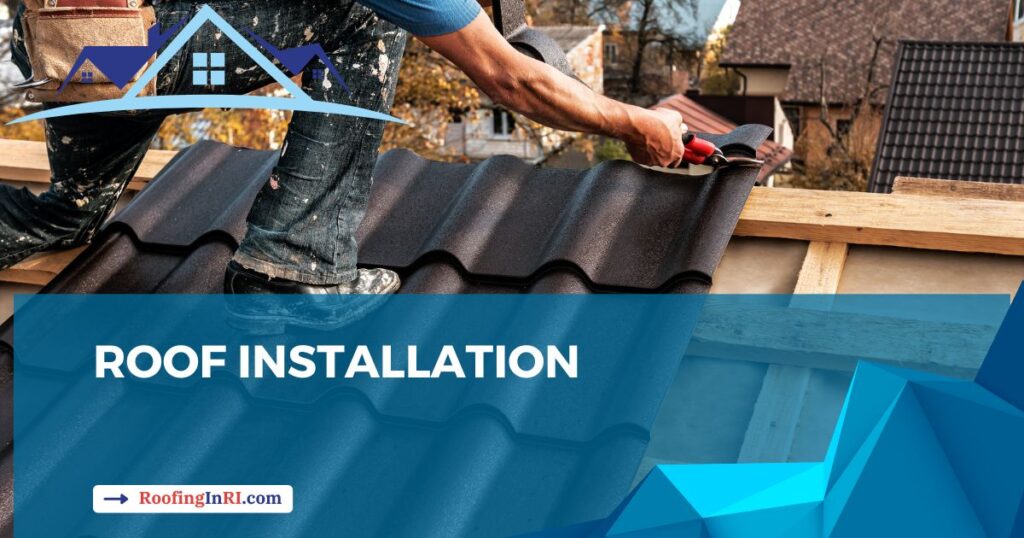Roof installation is a significant undertaking that plays a crucial role in the structural integrity, energy efficiency, and aesthetic appeal of any building.
Whether constructing a new home or renovating an existing one, understanding the intricacies of roof installation is essential to ensure a durable and functional roofing system.

In this comprehensive guide, I will dig into the various aspects of roof installation, covering everything from materials and techniques to considerations for hiring professionals.
Important aspects of roof installation

Roof installation is crucial during new construction, renovations, or when the existing roof is damaged beyond repair. It’s essential before extreme weather seasons to ensure protection against the elements.
Additionally, installing a new roof enhances energy efficiency, improves property value, and prevents structural damage. Timely installation also prevents further deterioration, reducing the risk of costly repairs.
Ultimately, whether for safety, energy efficiency, or property enhancement, roof installation is paramount whenever there’s a need for a reliable, durable, and functional roofing system.

As a roofing contractor, I emphasize the importance of roof installation for safeguarding homes against weather elements, ensuring structural integrity, and enhancing energy efficiency. A properly installed roof protects the property, improves its value, and provides peace of mind to homeowners.
Roof installation is vital for shielding homes from weather, ensuring structural integrity, and enhancing energy efficiency. It safeguards property value and offers peace of mind.
The reasons why you should not install metal roofs over shingles →
Types of roofing materials

The right roofing material will increase the longevity, durability, and aesthetics.
In the last 30 years, we have worked with almost all types of roofing materials, which gives us a huge opportunity to compare them based on unique situations.
Let me walk you through the various types of roofing materials available and their characteristics:
Asphalt shingles

- Most common roofing material due to affordability and versatility.
- Available in a wide range of colors and styles to match your home’s aesthetic.
- Easy to install and repair, making maintenance relatively simple.
- Moderate lifespan of 15-30 years, depending on the quality of the shingles.
Read also: What are architectural asphalt shingles?
Metal roofing

- Long-lasting: Metal roofs can last 40-70 years or even longer, so you won’t have to worry about replacing them anytime soon.
- Tough and sturdy: They’re super strong and can withstand harsh weather.
- Variations: You can choose from different types of metal like steel, aluminum, or copper, and pick colors and styles that match your home’s vibe.
- Energy-efficient: Metal roofs can help keep your home cooler in the summer by reflecting sunlight, which can save you money on cooling costs.
- Low maintenance: Once it’s installed, you won’t need to do much to keep it looking good. Just the occasional check-up to make sure everything’s okay.
The reasons why you should not install metal roofs over shingles →
Tile roofing

- It is known for its timeless elegance and durability, with a 50-100 years or more lifespan.
- Available in clay or concrete tiles, offering a variety of shapes, colors, and textures.
- It provides excellent insulation and fire resistance, making it suitable for hot climates.
- It requires highly professional installation for tile weight and the intricacies of the process.
The pros and cons of black roofs →
Slate roofing

- Considered one of the most premium roofing materials, with a lifespan of 100 years or more.
- Natural beauty and distinctive appearance add value and sophistication to any home.
- Highly durable and resistant to fire, mold, and pests.
- Requires expert installation and regular maintenance to ensure longevity.
Advantages of prefabricated roofing →
Wood shingles or shakes

- It offers a rustic and charming aesthetic that complements traditional and historic homes.
- Natural insulation properties provide energy efficiency and soundproofing.
- It requires regular maintenance, including staining or sealing, to prevent decay and insect infestation.
- Lifespan varies but typically ranges from 20-40 years, depending on the wood species and climate.
These are some of the most common roofing materials. They vary in price, installation cost, durability, style, weather resistance capability, etc.
Not every type of material suits everyone. It depends on budget, weather, building structure, preference, etc. You can contact us to get personalized information and help.
5 Best roofing shingles brands in the US →
Roof installation process

- Inspection and preparation: A thorough inspection of the existing roof is conducted before installation.
- Removal of old roofing: In most cases, the existing roofing materials are removed to provide a clean surface for the new roof installation.
- Deck preparation: The roof deck is inspected for any signs of damage and repaired or replaced as necessary. Proper installation of underlayment and flashing is crucial for preventing water infiltration.
- Installation of roofing materials: Each type has its own specific installation process, which may involve laying down shingles, fastening metal panels, or securing tiles in place.
- Finishing touches: The installation is completed with the addition of ridge caps, vents, and other accessories to ensure proper ventilation and drainage.
Hiring a professional roofer

- Credentials and experience: Look for roofers who are licensed, insured, and expert.
- References and reviews: Check references from past clients.
- Written contract: Ensure that all aspects of the project, including materials, labor, timelines, and payment terms, are clearly outlined in a written contract.
- Warranty coverage: Verify the warranty offered by the roofer for both materials and workmanship to protect yourself against any potential issues in the future.
Top 10 signs of bad roofing contractors →
Maintenance and care
- Regular inspections: Schedule annual inspections to identify and address any issues such as damaged shingles, leaks, or gutter problems.
- Cleaning: Keep the roof free of debris, leaves, and branches to prevent water buildup and potential damage.
- Repairs: Promptly repair any damage to the roof.
- Maintenance: Hire a professional roofing contractor for periodic maintenance tasks such as resealing flashing or reapplying protective coatings.
10 essential tips for roof maintenance and repairs →
What are the things to consider when deciding between repair or replacement?
When deciding between repair or replacement, several factors should be carefully considered:
- Damage Extent: Assess the extent of damage to the roof. Minor issues may be easily repaired, while extensive damage affecting a large portion of the roof may warrant replacement.
- Age of Roof: Consider the age of the roof. If it’s nearing the end of its expected lifespan and experiencing frequent issues, replacement may be more cost-effective in the long run than continual repairs.
- Cost Analysis: Compare the cost of repairs versus the cost of replacement. While repairs may seem cheaper initially, recurring repairs over time can add up. A thorough cost analysis, factoring in long-term savings and potential insurance coverage, can help make an informed decision.
- Future Plans: If you plan to stay in the home for many years, investing in a new roof can provide peace of mind and potentially increase the property’s value. However, if you’re planning to sell soon, repairs may be sufficient to address immediate concerns.
- Warranty Coverage: Review any existing warranties on the roof and roofing materials. In some cases, replacing the roof may be necessary to maintain warranty coverage or take advantage of extended warranty options offered by manufacturers.
By carefully considering these factors and consulting with professionals, you can make an informed decision between repairing the existing roof or opting for replacement.
A guide to skylight insulation →
Conclusion
Roof installation is a critical aspect of building construction and renovation, requiring careful consideration of materials, techniques, and professionals involved.
Whether repairing or replacing your roof, a thorough assessment of damage extent, age, cost analysis, future plans, and warranty coverage is vital. Consultation with professionals ensures an informed decision for a durable, functional, and cost-effective roofing solution.
Call us for roofing needs, including roof replacement financing in Rhode Island (Providence, Pawtucket & Woonsocket). (401) 868-1313



